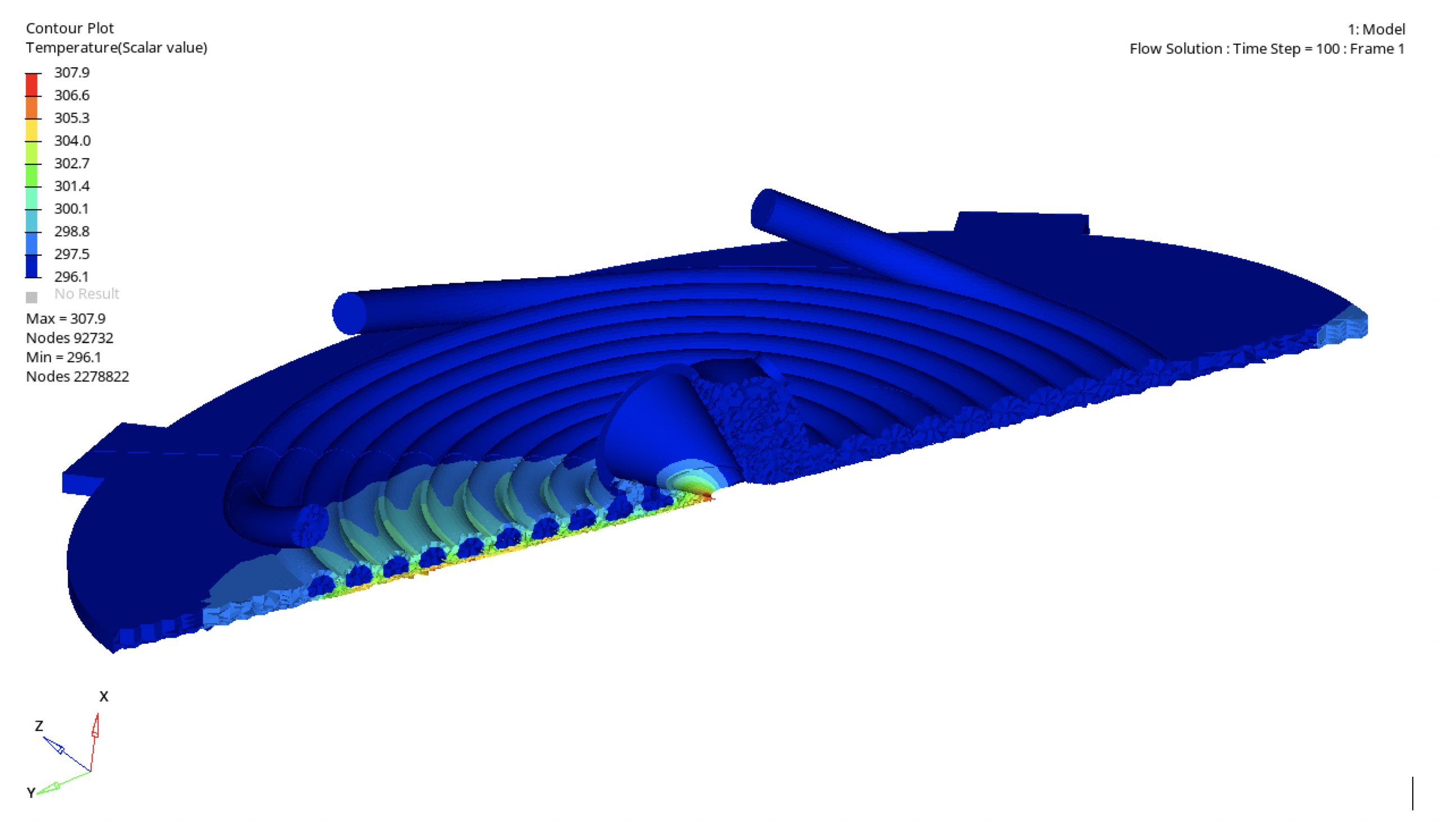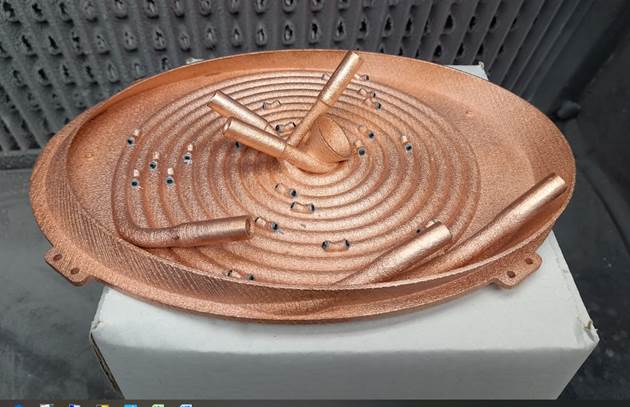The preliminary design of the EST Heat Rejecter is being performed by the company CITD Engineering & Technology. A status report is presented.
 Heat Rejecter thermal analysis. Sun is in the "up" position, ambient temperature is 25º and coolant 2º below ambient temperature.
Heat Rejecter thermal analysis. Sun is in the "up" position, ambient temperature is 25º and coolant 2º below ambient temperature.
The preliminary design of the EST Heat Rejecter (HR, the cooled mirror with a central hole that lies at the prime focus of the telescope) is divided in 3 phases. The Phase 2 review was closed in January 2023. The main goal of Phase 2 was the design and optimisation of the solution selected in Phase 1, based on the jet impingement technology. Another goal of Phase 2 was the design and definition of a thermal prototype to validate the key requirements for the successful operation of the Heat Rejecter.
The cooling system of the Heat Rejecter at the end of Phase 1 was a non-sectored jet impingement, a promising technology in the astronomy field that has been used in many other applications. A prototype of jet impingement as a demonstrator for EST was developed and manufactured by the Italian company SRS in the framework of the SOLARNET-FP7 project, so that its performanece can be verified by tests.
One of the key parts of a preliminary design is to evaluate the most valid solution among the different alternatives. According to the analyses, the jet impingement technology shows benefits but also potential risks. Consequently, it has been decided to investigate its main alternative: the cooling coil.
At the end of the Preliminary Design, exhaustive analyses and prototypes will be available for both technologies, giving EST the necessary information to choose the best concept for the detailed design. The EST-PO also plans to perform parallel test campaigns to compare the performance of the cooling coil prototype (preliminary design) and the jet impingement prototype (conceptual design).
A sectored cooling coil was investigated in the first place. This design would allow using lower coolant temperatures without risk of condensation. A controlled HR would lead to lower thermal gradients on the mirror surface, reducing thermal plumes and their effect on local seeing. Different strategies with different numbers of sectors were tested. It was concluded that the trade-off between performance and the added complexity in manufacturing and control was not sufficient to choose this concept. Consequently, the design evolved into a more robust non-sectored three-channel cooling coil. This new design is enhanced by the use of additive manufacturing. The coil channels are shaped to maximise the heat transfer at the acute angles formed by the tilted surface of the HR (see images).
During Phase 3, several analyses will be carried out in more detail and the manufacturing of the HR prototype based on cooling coils will be finalised for testing. The testing will include variables such as the temperature of the mirror and other external surfaces, the sensor locations, the operational ranges, the settling time of the system, the control system monitoring, the cabling and equipment dimensions, and safety.
 HR prototype in additive manufacturing. Credit: AIDIMME Institute of Technology.
HR prototype in additive manufacturing. Credit: AIDIMME Institute of Technology.
The HR mirror prototype will be manufactured in additive manufacturing by the AIDIMME Institute of Technology (Valencia, Spain). Also, the prototype integration and tests will be carried out by ARQUIMEA (Madrid, Spain).
Finally, after checking whether the key requirements are fulfilled by one or both prototypes and updating the design with the feedback from the prototype conclusions, the design shall pass the HR Preliminary Design Review.
